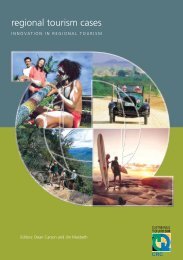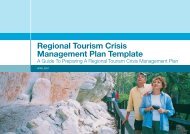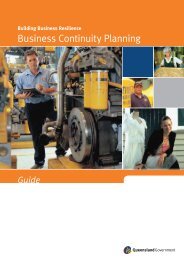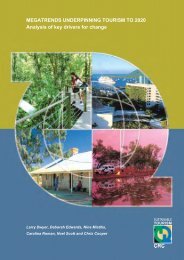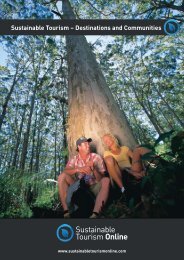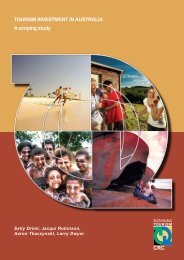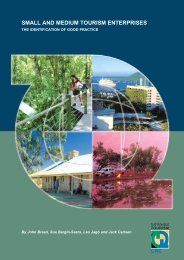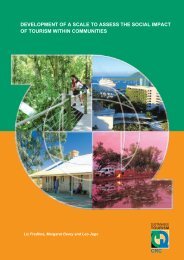Tourism Risk Management - Sustainable Tourism Online
Tourism Risk Management - Sustainable Tourism Online
Tourism Risk Management - Sustainable Tourism Online
Create successful ePaper yourself
Turn your PDF publications into a flip-book with our unique Google optimized e-Paper software.
New Orleans and the Lessons of Hurricane Katrina<br />
New Orleans, Louisiana, USA, home of the Mardi Gras, jazz musicians, and an extensive heritage<br />
of art, culture and culinary delights. As a world-renowned visitor destination it attracted between 8.5<br />
million and 10 million visitors annually, and generated approximately 800,000 jobs. <strong>Tourism</strong> was the<br />
region’s second largest industry.<br />
On 29 August 2005, Category 5 Hurricane Katrina struck New Orleans, causing widespread<br />
damage and breaches in the city’s levee system. As the Mississippi River flowed into the low-lying<br />
city, up to 80% of New Orleans became submerged. International media coverage exposed a global<br />
audience to images of death, destruction and mayhem. Despite warnings, evacuations were poorly<br />
planned and coordinated. Many visitors were transferred to shelters or simply advised to make<br />
arrangements to leave the area. Limited understanding and access to transport resulted in people<br />
staying in their homes. Last-minute evacuees blocked highways and fuel stations. City officials<br />
exercised limited control – few had anticipated an event of such severity, despite the lessons from a<br />
major disaster management exercise held twelve months earlier which was based upon a scenario<br />
involving issues which were an uncanny replica of Katrina.<br />
Initial search and rescue efforts were hindered by the continuing rising waters and accumulated<br />
debris as buildings, dwellings, infrastructure and utilities (public utilities/plant) had suffered massive<br />
damage. With limited reliable information available, media reports emphasized tragedy, social<br />
tension, looting and the chaotic plight of New Orleans, characterized by the horrors of the “Superdome”<br />
(which sheltered many visitors amongst the approximately 20,000 evacuees). Conditions<br />
deteriorated for survivors, and relief arrangements were complicated by access difficulties.<br />
Sanitation and the potential for disease outbreaks became serious issues.<br />
As officials debated the merits of rebuilding or relocating New Orleans, residents and volunteers<br />
returned to begin clean-up operations. While some operators managed to quickly resume or even<br />
maintain services, support infrastructure was limited. Hotels, airports, museums, entertainment and<br />
dining establishments had suffered extensive damage. Lacking housing and immediate employment<br />
opportunities, many employees relocated. Scheduled meetings, conferences and festivals were<br />
cancelled, relocated or indefinitely postponed.<br />
For small tourism businesses, recovery has so far proved extremely challenging. While the<br />
Government has assisted with debris removal, grants and advertising and marketing budgets,<br />
rebuilding the industry and positive perceptions has proved difficult. ‘Louisiana’s Rebirth’ was<br />
significantly delayed by an active hurricane season which made consumers wary. With the reopening<br />
of hotels, restaurants and parks, tourism is returning but visitor spending is limited.<br />
Physical reconstruction of the city is still far from complete, and many residents and business have<br />
not returned. While New Orleans remains an intriguing city, its restoration as a national and<br />
international visitor destination requires confidence in the process of community recovery and<br />
associated safety and security measures.<br />
Important lessons for the tourism industry from Katrina include:<br />
• risk and emergency management planning (including insurance) should be an individual<br />
business priority and not just a government responsibility;<br />
• it is important to understand community and environmental vulnerabilities beyond just the<br />
tourism industry;<br />
• communication and coordination with emergency management agencies can help protect<br />
life and property;<br />
22 <strong>Tourism</strong> <strong>Risk</strong> <strong>Management</strong> – An Authoritative Guide to Managing Crises in <strong>Tourism</strong>



